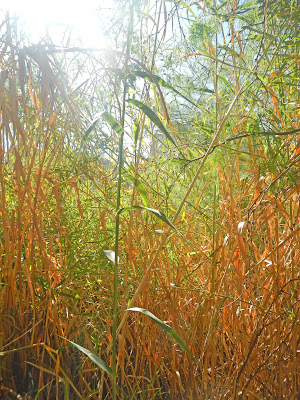Some plants introduced to America for one purpose turn out to be a huge mistake. Let's have a look at some plants that have taken over landscapes and often times caused huge problems, bigger than the ones they solved -
KUDZU
Spreading at thousands of acres a year in the Southern US, Kudzu is a dreaded infiltration. This vine is native to subtropical Asia.
Innocently, the vine was introduced to the US from Korea in the 1876 Centennial in Philadelphia. That might have been the end of it, but a few years later when it was introduced to New Orleans at an expo in 1883, the landowners saw a real potential to use it.
Locals saw it as a way to curtail soil erosion and perhaps a filler for the cattle to eat. It was planted on slopes to prevent erosion and during the dust bowl to protect the land. But, before anyone realized it, it took over with a vengeance.
By 1970, the Department of Agriculture finally relisted it as a "weed" and they stopped suggesting people use it as a ground cover. In 1997, they stepped it up a notch to "noxious weed" list. It is estimated to cover 7.4 million acres. It has even been recorded as far north as New York and Canada.
To add injury to insult, Kudzu grows an inch a day!
TUMBLEWEED
We call it tumbleweeds because when they die, their shallow roots snap off and they roll away in the wind, but the real name of the plant is Russian Thistle. Some call it the salt plant because it can tolerate the salty soils found in the American Desert Southwest.
They look like an innocent happy green plant in the desert when they are alive.
This plant is native to the Ural Mountains of Russia. And it became invasive by the simple act of tumbling. As it tumbles, it disperses seeds.
They arrived in America in South Dakota in 1877 by accident. The seeds were inside flaxseed shipped from Russia. By 1900, it had tumbled its seeds all the way to the Pacific Coast.
BAMBOO
Bamboo makes a gorgeous sound when it knocks together in the wind, a tall fast-growing screen, and the wood can be used to make amazing things. The problem with this plant of tropical origins is that, once you plant it, it will spread invasively. Many gardeners have made the mistake of not growing it in pots or with barriers dug into the ground to stop the growth. There are varieties that are noninvasive, but those who planted invasive varieties end up having a battle of the wills and angry neighbors.
This bamboo I photographed along the Salt River in the Greater Phoenix area's East Valley Region. With all the available water there, it had grown up to the extreme, nearly choking an island in the river. It makes an impenetrable fortress, growing to heights of 15 feet tall.
It was introduced in Florida in the mid 20th century and what was found was that it would pretty much grow over and engulf anything that sat still. And, with the clinging claws, it could pull on and damage things beneath. If you let it grow up a building, it can do some nasty damage to it.
For many the advantages are clear, it can cover those cinderblock walls that are used in backyards in the desert and add some trumpeting flowers that might attract hummingbirds and butterflies.
It can also smother anything it engulfs.
Sure, none of these varieties are going to eat you alive, but invasive plants left out in the wild have done amazing damage to the landscape. Here in Arizona, we have adopted some Mediterranean plants and Australia, as the climate supports it, but trees such as palm trees were a foreign brought and planted thing. So, when you think of the Old West, don't think palm trees, don't even think tumbleweed (it wasn't here until the 1900s), think Saguaros! (a cactus native to our Sonoran Desert)










Comments
Post a Comment